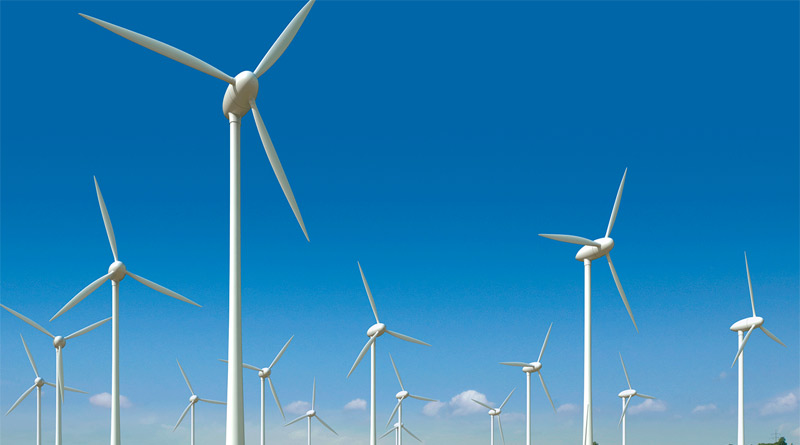How a Small Wind Generator
Wind power is usually thought of as a technology to bring electricity to remote areas where power lines may not reach, but vertical small wind generators are now being used in residential applications to reduce home heating bills and create personal energy independence inside city lines. In fact, small wind generators show so much promise in urban and suburban locales for residential use that many municipalities are now scrambling to update their building codes, zoning regulations, and property tax structures to accommodate these new devices. A wind turbine large enough to generate all the electricity used in an average American home costs upwards of $30,000 and is so tall and obtrusive that the likelihood of obtaining a permit to build one inside city limits is small. Large wind turbines use huge horizontal blades that catch the wind at very high altitudes. (More wind is available the higher up a wind turbine is able to reach.) In the past this meant that wind power was not really accessible to individual homeowners unless a local power plant invested in it. Wind turbines were just too expensive.
However, the new vertical small wind generators cost between $1700 and $3500 and have a much lower physical profile. Most attach to a roof or are bolted to a base that runs alongside one outside wall. Some small wind generators are collapsible to make maintenance more convenient. Not much bigger than a weathervane, these devices are well within reach both pricewise and in terms of practicality. Small wind generators usually have vertical blades that look like rotating hamster cages turned on end. The ‘bars’ of the cage are what catch the wind and make the apparatus turn to generate electricity. Electricity is then fed to an inverter, which creates DC current that is then turned into AC current and is either stored in a battery for future use, or fed directly into the public electrical grid.
One of the biggest problems in ‘selling’ small wind generators for home use is that they almost never supply enough electricity to offset all the power needs of an average home, and this is usually what homeowners want. It is often hard to even quantify exactly how much savings a homeowner can expect, making it hard for homeowners to decide whether the device is “worth it.” However, if you look at the electricity generated by these devices as one step toward creating energy independence for alternative home heating systems, their utility becomes more obvious. Most home heating systems require a certain amount of electricity to circulate the heat. Pellet stoves, one of the most inexpensive and efficient alternative home heating systems currently available, all require a small amount of electricity to run the pellet feeder. Installing a small wind generator can easily provide more than enough electricity to run a pellet stove or a small blower, thereby taking home heating costs completely off grid and reducing utility bills in the process.
Most people are amazed to discover that the biggest energy drain in the house is the water heater, followed closely by the washer and dryer. Toasters, TVs, computers, blenders, and home heating systems all use electricity, but that usage is just a fraction of what it costs to heat water alone. Instead of thinking of a small wind generator as being a device that must be adequate to meet conventional electricity needs of an entire household, a more productive approach is to break down residential electricity use into separate components (water, washing, small appliances and electronics, home heating) and then separately find alternative energy solutions for each component.
It is possible to heat water alternatively (with solar for instance) and run an alternative home heating system with a small wind generator, leaving the only real appliances and small electronics as the only real users of grid electricity. These two steps alone drastically reduce the dollar amount of a monthly electric bill. When homeowners begin to look at energy usage that way, the utility of a small wind generator becomes clear. Homeowners don’t have to wait for energy independent technologies to be invented: the tools are available today, and many are very affordable. All that is needed is a different way of framing the issues. Once the applications become clear, new community regulations that help homeowners invest in energy independent technology can then be passed, creating increased independence and savings without prohibitive red tape.

